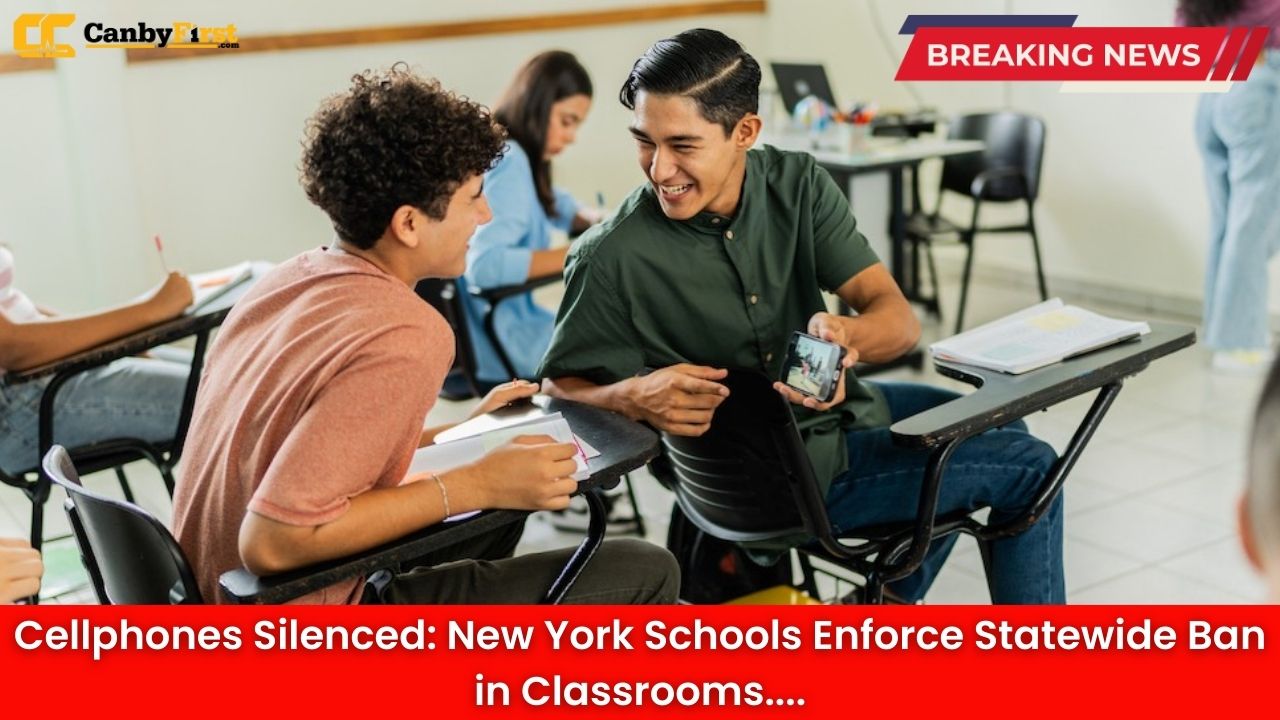New York, US: In a sweeping move aimed at improving student focus and curbing distractions, school districts across New York have begun enforcing a ban on cellphones during school hours. The measure, which took effect this week, is already reshaping the daily routines of students and teachers, sparking a mix of approval, frustration, and debate among parents, educators, and students.
A Statewide Push for Focus
The decision follows months of discussion between state education officials, school boards, and parents who voiced concerns about the growing impact of smartphones on learning. At the heart of the ban is a belief that limiting access to cellphones will help create classrooms more conducive to concentration, face-to-face interactions, and healthier social dynamics.
“Students are spending so much time scrolling or texting that their ability to engage in lessons or build meaningful relationships is being affected,” said one district superintendent. “This ban is not about punishment; it’s about prioritizing education.”
Also Read
What the Ban Entails
The enforcement rules vary slightly among districts, but the core directive is consistent: once students arrive at school, phones must be turned off and stored in designated lockers, pouches, or secured areas until dismissal. Some schools have adopted lockable pouches that prevent students from accessing the devices during the day, while others require phones to remain in locked cubbies.
Students are permitted to carry phones to and from school, ensuring they remain connected with parents before and after classes. Exceptions are being made for medical or emergency reasons, with strict guidelines in place.
Mixed Reactions From Students
For many students, the new policy has instantly changed their daily routines. Some say it feels liberating, while others call it frustrating.
“I actually like it,” one high school junior shared. “Without my phone buzzing every few minutes, I’ve been more engaged in class discussions.”
Others expressed a different view: “It’s tough. Sometimes, things happen at home and I want to be reachable right away. It feels like school doesn’t trust us,” said a senior.
Parents Divided on Policy
Parents, too, are weighing the pros and cons. Supporters believe the ban will reduce classroom distractions, cyberbullying, and toxic social media comparisons that contribute to stress. Critics, however, argue that banning phones makes it harder for students to stay in touch with family during emergencies.
One parent voiced concern: “My child takes the bus two hours each way. I want to know she can call if she feels unsafe. I hope schools strike a balance between safety and focus.”
Teachers See Early Improvement
Across multiple districts, educators have noted an immediate shift in classroom dynamics. Teachers report that student-eye contact during lessons has increased, group participation has improved, and side conversations have decreased.
“Some kids didn’t realize how much their phones consumed them until they no longer had them in front of them,” one middle school teacher explained. “We are already seeing richer discussions and more attentive note-taking.”
Broader Implications for Learning
Experts say the policy could also impact student mental health, with reduced exposure to constant notifications and online pressures. Proponents argue that less screen time may foster better sleep habits, stronger peer connections, and improved academic performance.
Still, challenges lie ahead. Students accustomed to using phones for research, calculators, or scheduling will need to transition to school-provided technology and traditional resources. Districts are working on increasing access to tablets and laptops designed for academic purposes, ensuring students can still leverage technology for productive learning.
Looking Ahead
While some skepticism remains, New York’s bold step is being closely watched by other states considering similar restrictions. If results show measurable benefits for learning outcomes and student well-being, the policy could spark a national trend.
For now, schools across New York are adjusting to quieter hallways and classrooms where the familiar glow of screens is noticeably absent. The real test will come as weeks turn into months, revealing whether the cellphone ban creates lasting improvements—or whether students and parents demand a loosening of the rules.












